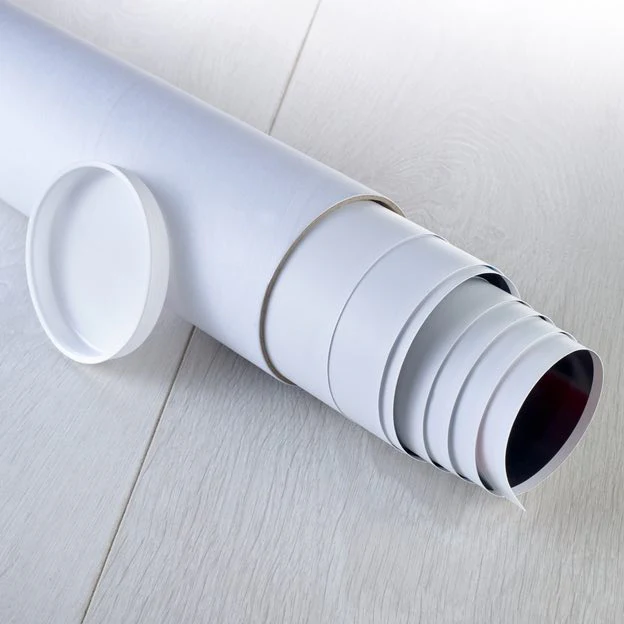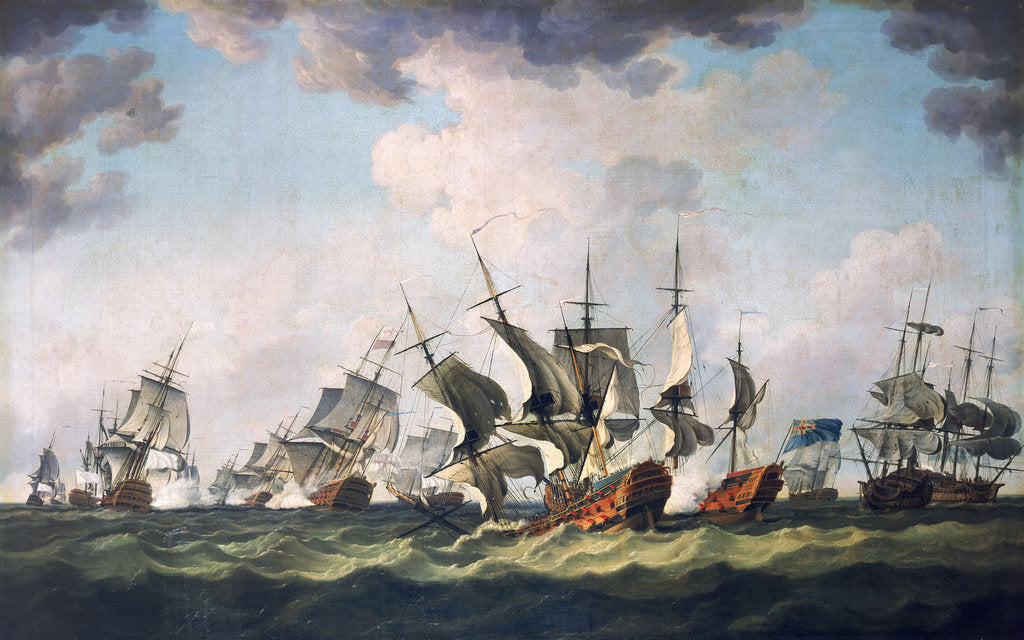The Battle of Quiberon Bay, 20 November 1759
The Battle of Quiberon Bay, on 20 November 1759, was the most decisive naval encounter during the Seven Years War, 1756-63, a conflict involving the major European colonial powers and fought around the globe. France had been at war with Britain since 1756, her position in Canada, India and the West Indies was on the point of collapse and in Europe she faced stalemate against Prussia, which received British support. The battle resulted in the destruction of the French Brest fleet and occurred when the French broke out of the five-month English blockade of Brest. In an attempt to solve her problems the French planned to land an army of 20,000 men in Ireland. This force was assembled largely in the gulf of Morbihan in southern Brittany under the Duc d'Aiguillon, and was to be escorted by the Brest fleet under Admiral Hubert de Conflans. Admiral Sir Edward Hawke's Channel Fleet blockaded Brest to prevent the French leaving to collect the troop transports, but during a gale in the first week of November, Hawke's ships were forced to run for shelter in Torbay, giving de Conflans the chance to escape. On hearing that the French had done so Hawke went in pursuit and, on 20 November, sighted him 20 miles out to sea. De Conflans, relying on local knowledge, ordered his fleet to take refuge in Quiberon Bay, south of Morbihan, assuming Hawke would not follow, both because night was quickly coming on and when he saw the area was one of ill-charted rocks, reefs and wild seas. This was a miscalculation, for Hawke relentlessly pursued him into the bay, losing two of his own ships on the outer reefs but sinking the French 'Thesee' and 'Superbe' by a combination of gunfire and the weather, and otherwise decimating de Conflans' force in what became an action practically in the dark. The French flagship 'Soleil Royal' went aground in the bay, near Le Croisic, and was burnt to prevent capture the following day. Others were captured including the 'Heros', which was burnt. A few French ships escaped to Rochefort and some others managed to find refuge in the mouth of the River Vilaine, where they were trapped for months and one more lost by grounding. This action stopped any French plans to invade Britain during the Seven Years War. The famous naval song 'Hearts of Oak' was composed to commemorate the battle, which was fought so close inshore that contemporary accounts reported that ten thousand persons watched it from the coast. In the central foreground is the French ship 'Thesee' taking her last plunge as the water breaks over her fo'c'sle. Close by on the right and still firing into the 'Thesee' is the English 'Torbay' commanded by Captain the Hon. Augustus Keppel, with her main and mizzen sails aback. On the right of the picture in the middle distance is the French ship 'Formidable' which is shown being taken by the English ship 'Resolution' astern of her. In the background seen between the 'Torbay' and the 'Formidable' is a frigate, in port-quarter view. On the left of the picture in the background are the sterns of the leading division of the English warships and the rear of the French fleets sailing on the port tack and in action. The nearest two are the French flagship 'Soleil Royal' on the left, shown as a three-decker, firing at an English ship which is returning her fire. Curiously the painting does not include Hawke's flagship, the 'Royal George'.
Richard Paton
- Image reference: BHC0397
- National Maritime Museum, Greenwich, London
Discover more
More by this artist
Explore the collections
Search for similar images
Product images of The Battle of Quiberon Bay, 20 November 1759



Our prints
We use a 240gsm fine art paper and premium branded inks to create the perfect reproduction.
Our expertise and use of high-quality materials means that our print colours are independently verified to last between 100 and 200 years.
Read more about our fine art prints.
Manufactured in the UK
All products are printed in the UK, using the latest digital presses and a giclée printmaking process.
We only use premium branded inks, and colours are independently verified to last between 100 and 200 years.
Delivery & returns
We print everything to order so delivery times may vary but all unframed prints are despatched within 2-4 days via courier or recorded mail.
Delivery to the UK is £5 for an unframed print of any size.
We will happily replace your order if everything isn’t 100% perfect.

















